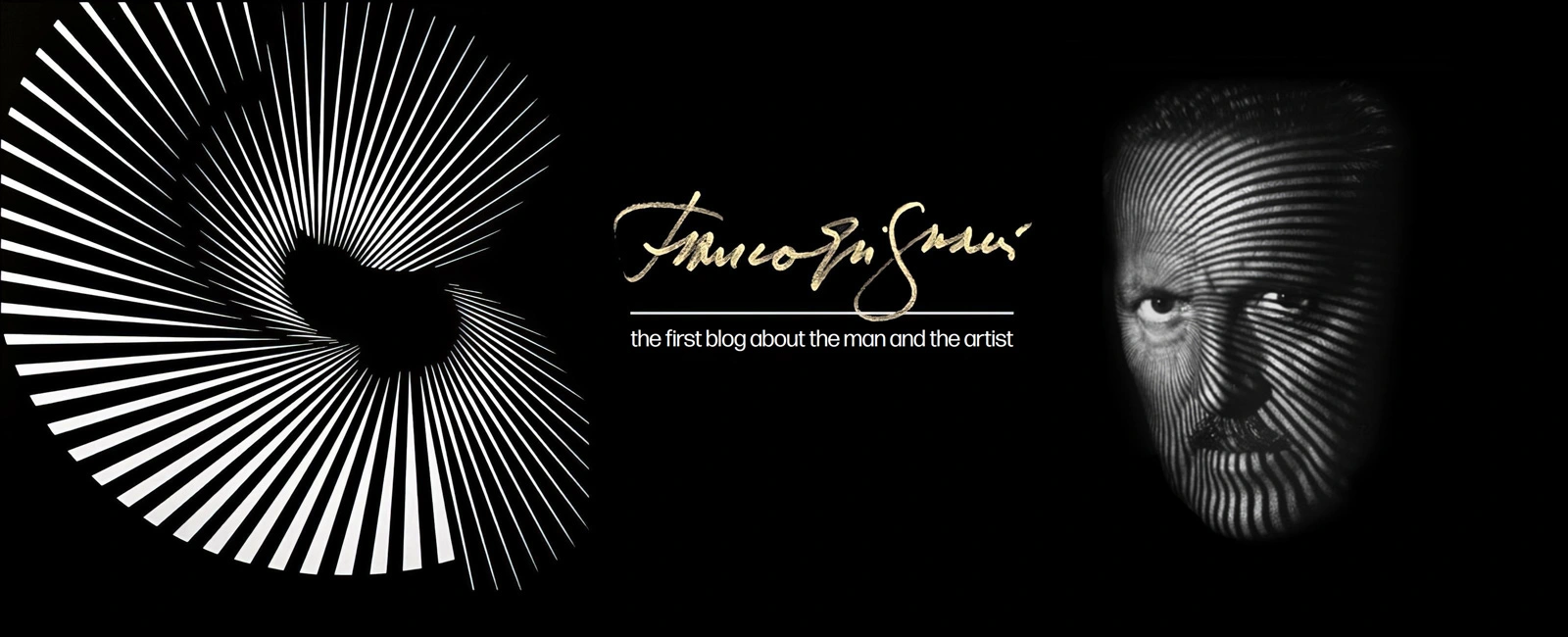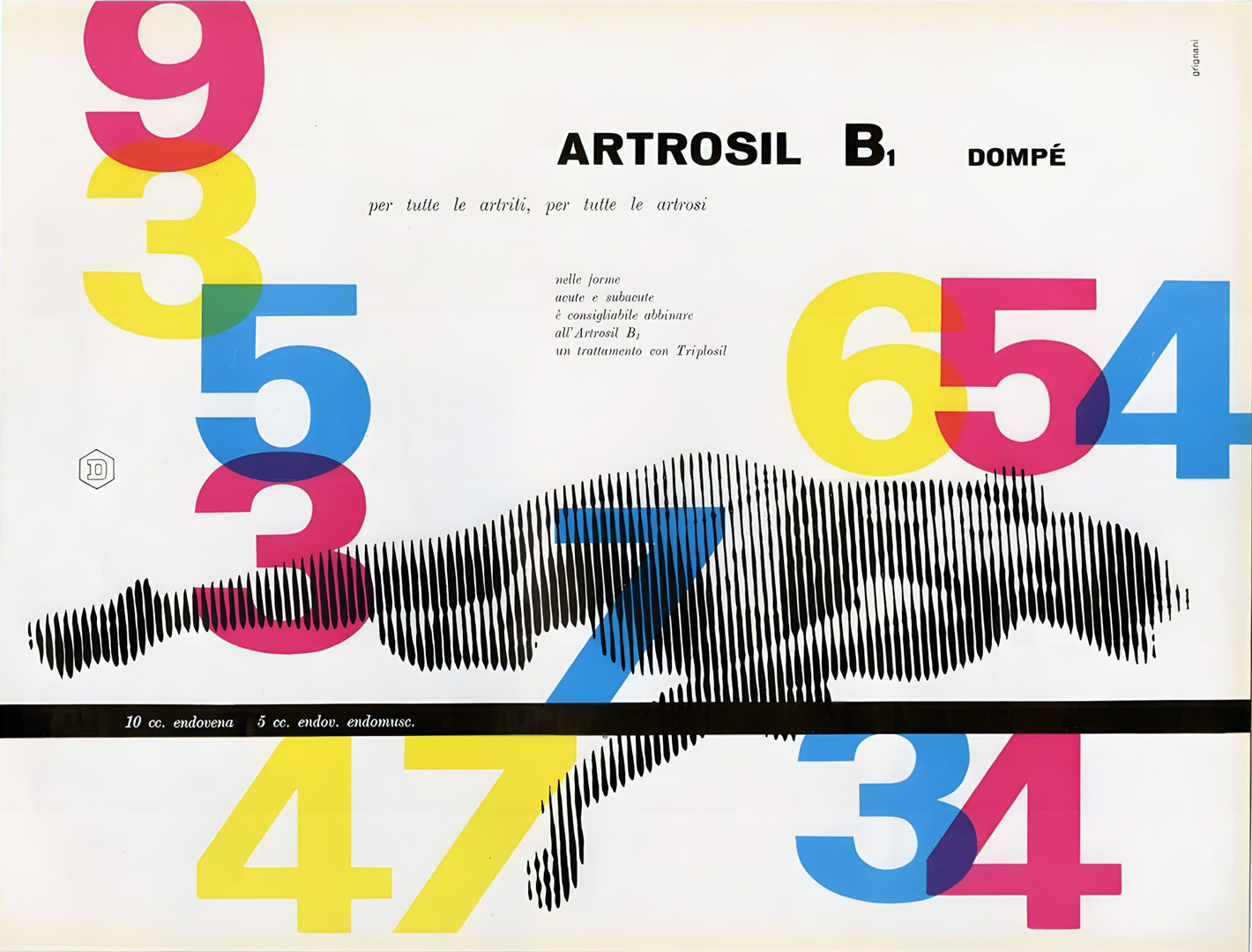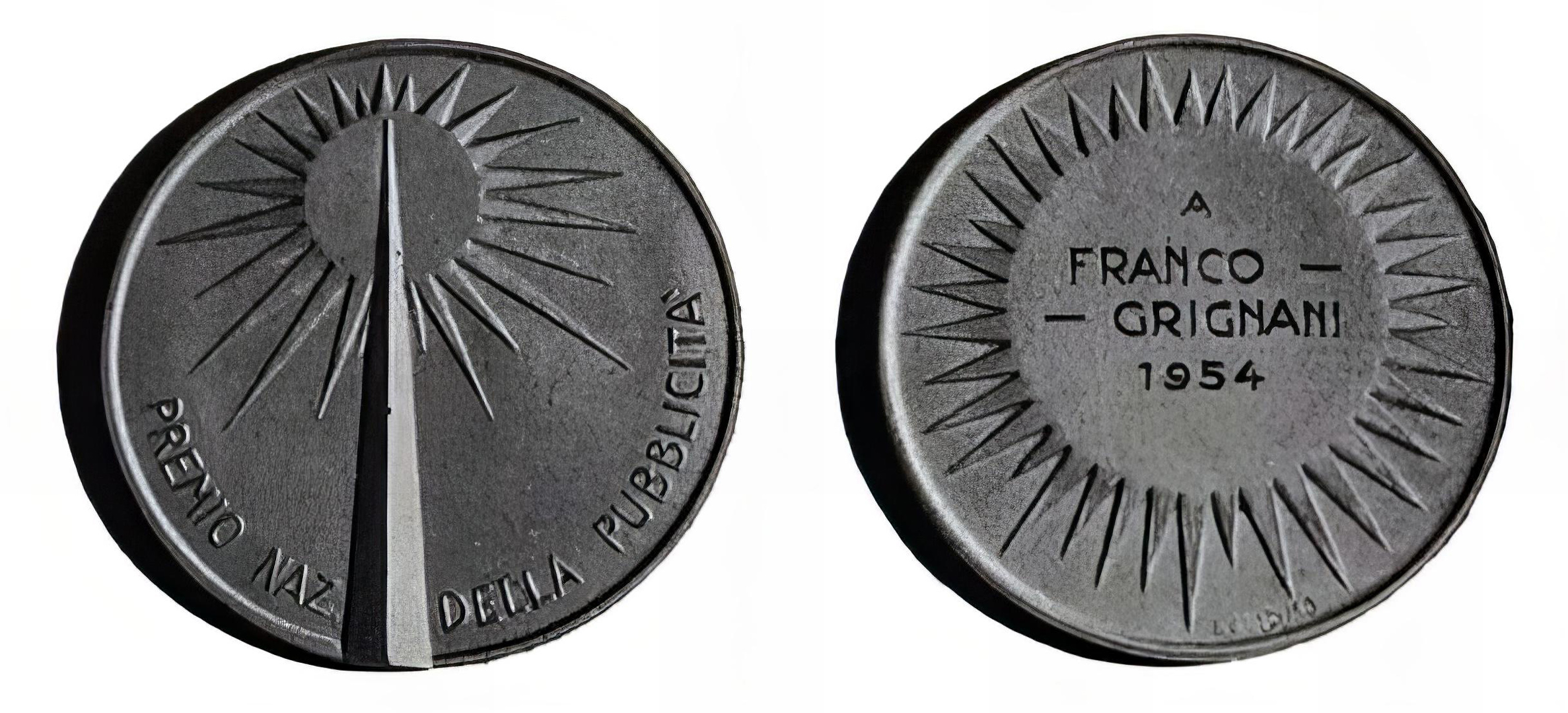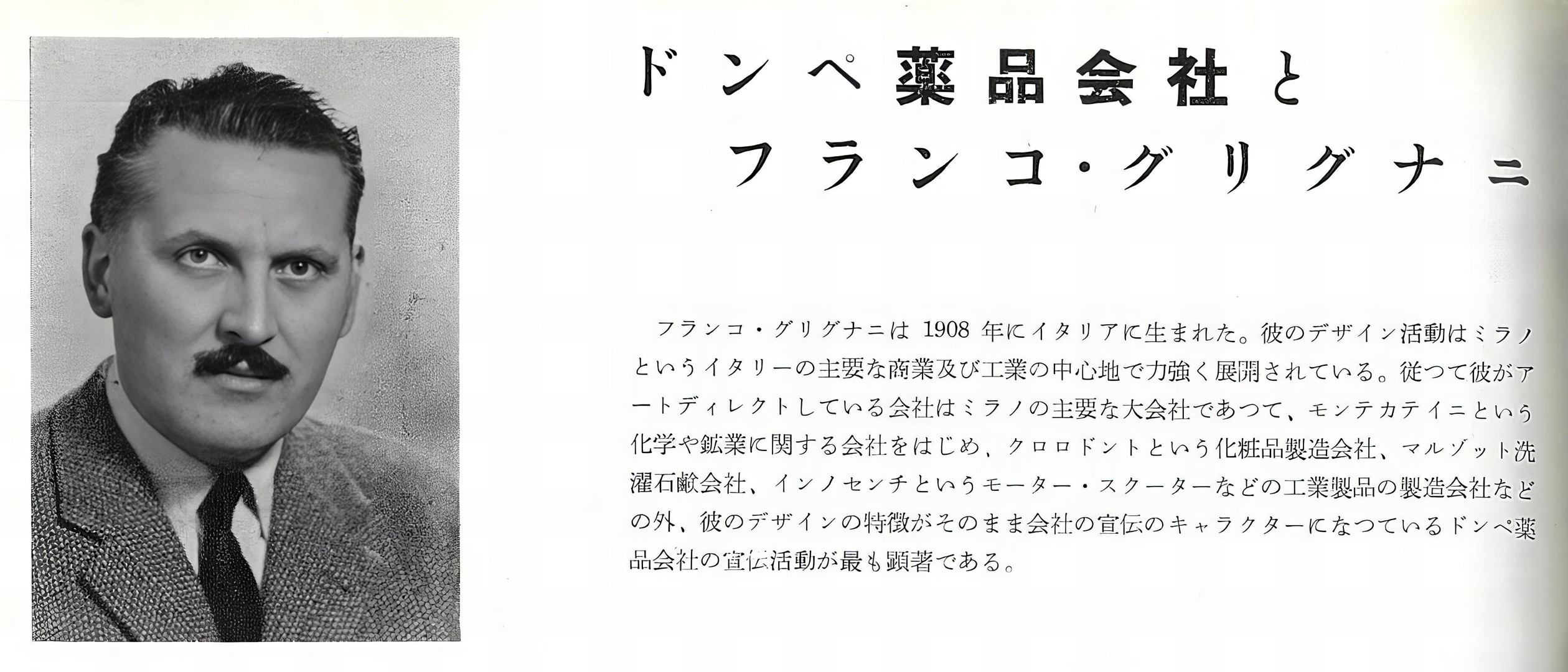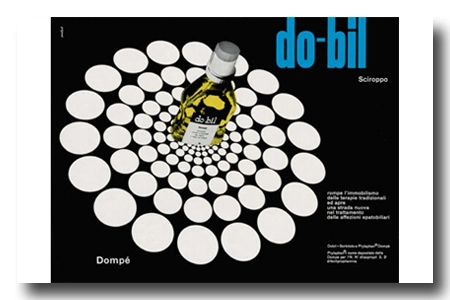

“The years since the war have seen a tremendous growth in the field of medicine. This has become the golden era of antibiotics and metabolic agents, the fulfilment of the dreams of Ehrlich and Pasteur. As the industry has grown, so have the demands made upon the pharmaceutical art designer and so have his opportunities. And as these have grown, so has the competition.”
[from ‘Pharmaceutical Advertising Design’ in Graphis issue n° 47, 1953]
In 1940, after completing his degree in pharmacology at Pavia, Franco Dompé established his independent pharmaceutical production company, deviating from the pharmaceutical laboratory tradition of his father and grandfather. Today’s ‘Dompé farmaceutici‘ is still located in Milan, via San Martino 12 (just a few steps from Franco Grignani’s residence), in an imposing building which, at the inauguration of the new factory in 1951, had very modern architectural lines.
Franco Dompé’s success is intertwined with a careful strategic choice: by investing in the research and development of new medicines, he built a solid knowledge that allowed the company to flourish at the end of the scheme of the absence of patent protection for drugs.
In 1947, Franco Grignani assumed the role of Artistic Director for ‘Bellezza d’Italia‘, the house organ of Dompé farmaceutici, for which he designed numerous advertisements until 1961, significantly contributing to his international recognition in the field of graphics.
Characterized since the beginning by the excellent photographic quality and by a graphic design of great value, Bellezza d’Italia was initially a bimonthly periodical printed by Alfieri & Lacroix, aiming at a select audience primarily consisting of doctors and their families, to whom it had been given for free upon request since 1948. The editorial recipe deliberately avoided medical topics, emphasizing escapism. The content featured a mix of subjects, including fashion (sometimes with the artistic contribution from Jeanne Grignani), sports, art, and tourism. The magazine focused on presenting the natural and artistic beauties of the Italian peninsula, reflecting its name, ‘Bellezza d’Italia’, which literally means ‘Beauty of Italy’. The goal was to garner the favour of the ‘medical class’ and subsequently showcase pharmaceutical products in a non-invasive way:
“Bellezza d’Italia has never talked or will ever talk about the problems of high surgery, high medicine, epidemic, and diseases that are difficult or easy to cure, diagnostics, and other similar topics. Bellezza d’Italia wants to be an affectionate serene companion in the doctor’s hours of rest, a glimpse of the world […] that arrives at the doctor’s home every month.”
[Bd’I no. 7, 1949]
Cesare Colombo, an important photographer who collaborated with Grignani, recalls the artist’s words in a publication released on the occasion of the inauguration of a new Dompé research centre in 1993:
with a smile, he [Grignani] can glance through copies of Bellezza d’Italia, allowing them to bring back memories of a now remote professional quandary. «We had to provide doctors with news, ideas and promotional material,» he recollects, «avoiding the repetition of themes which were already well worn by their demanding working day. This is why I included a series of eye-catching symbols in the colour advertisements: the agility of ballet to fight paralysing pain, butterflies in flight to combat heart ailments and the outlines of phials or syringes forming elegant motifs inspired by Art Nouveau.»
[‘Dompé a L’Aquila’, 1993]
The texts had contributions from some of the most prominent authors and journalists, including Dino Buzzati, Indro Montanelli, and Camilla Cederna, with “topics that were often entirely new departures from the triviality of the illustrated magazines of the day.” [ibid.]
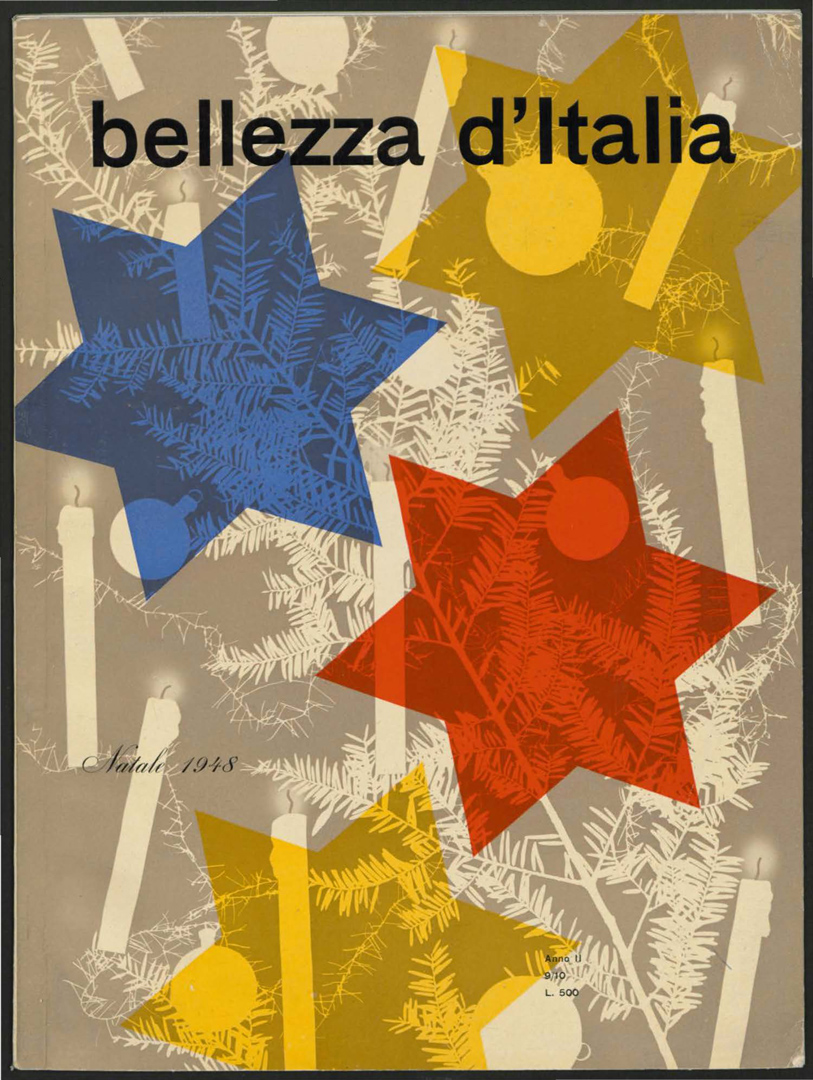
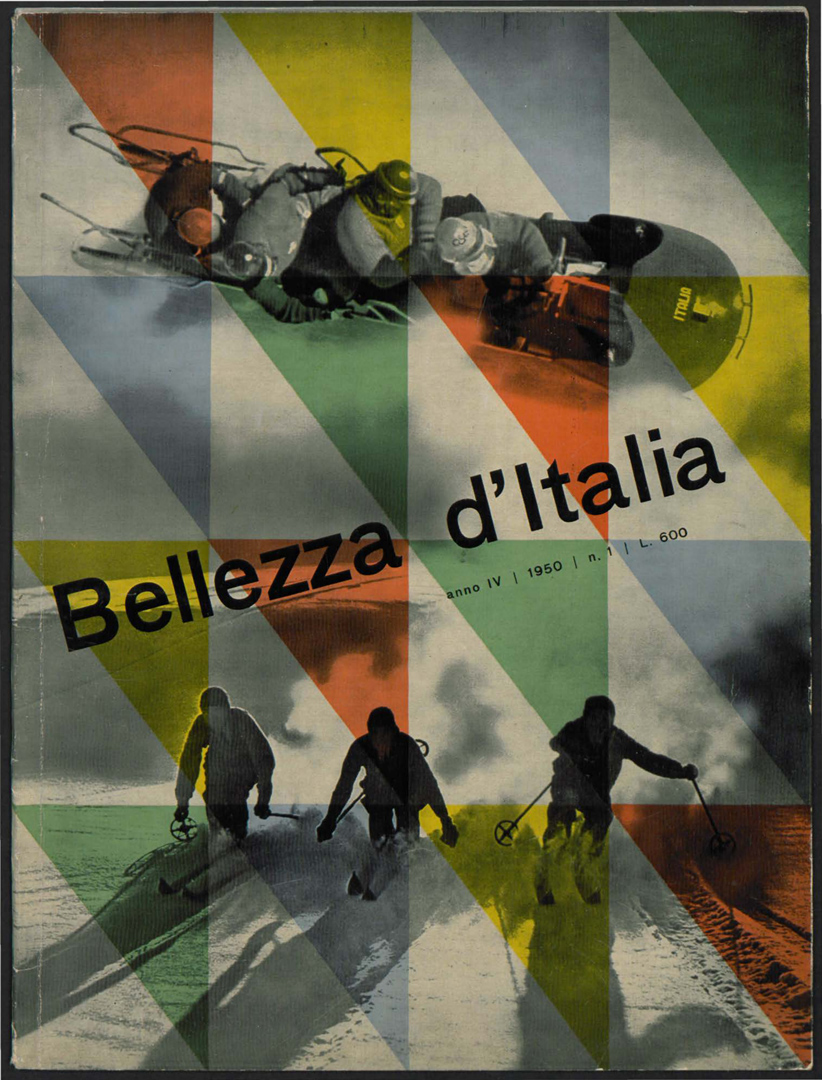
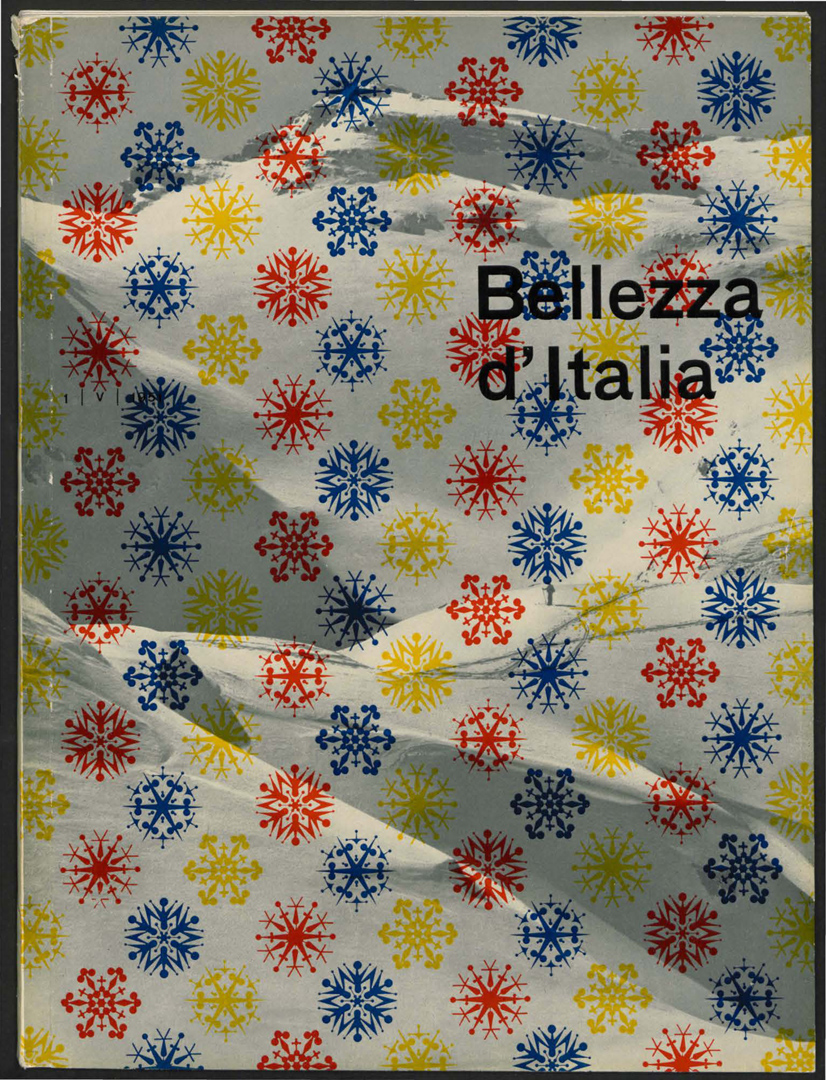
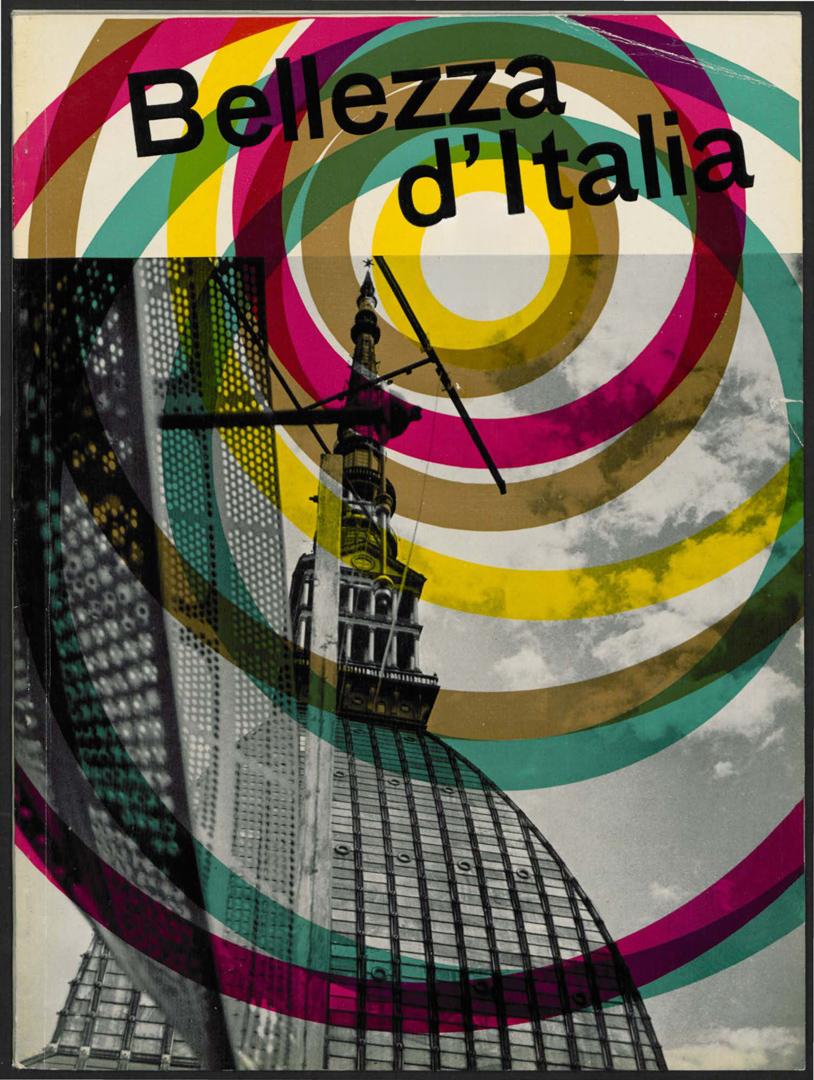
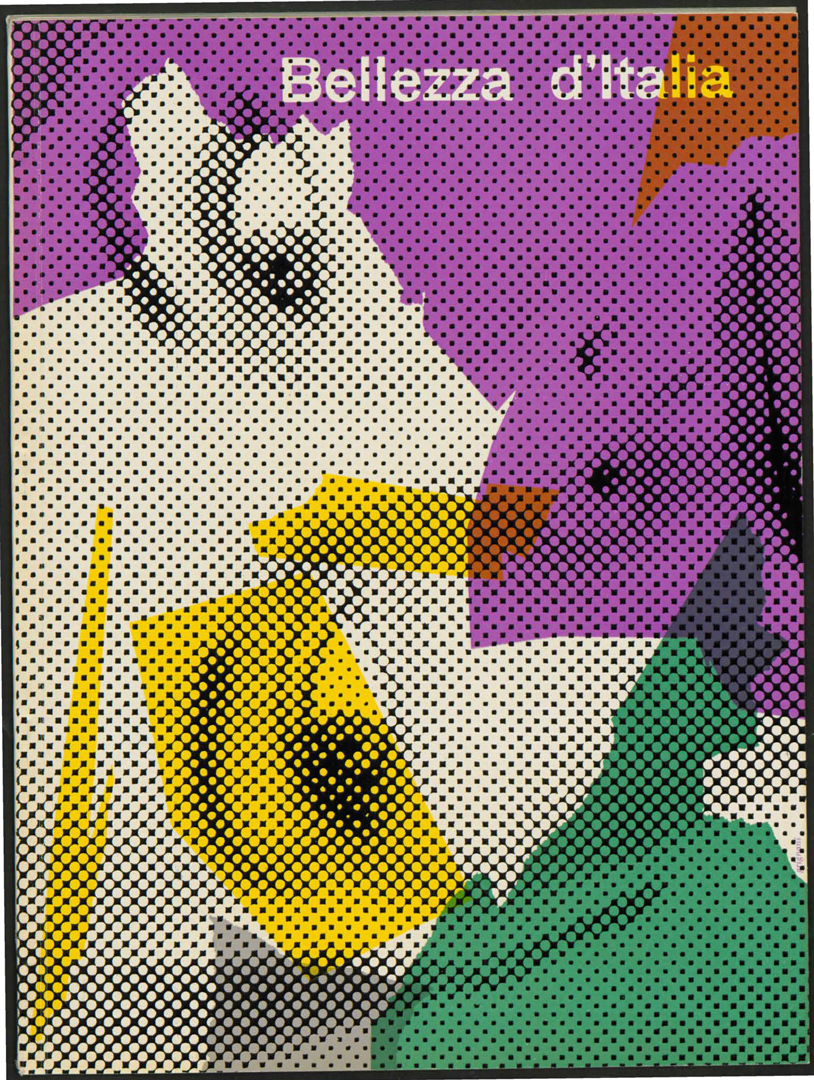
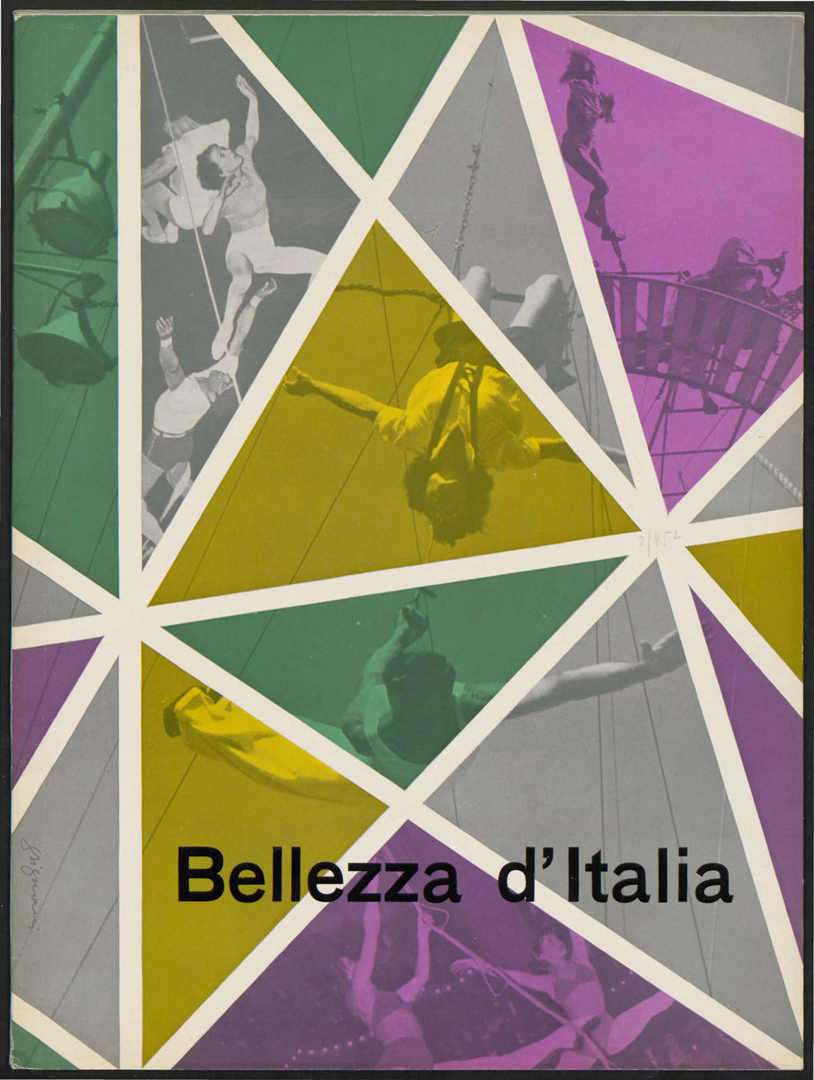
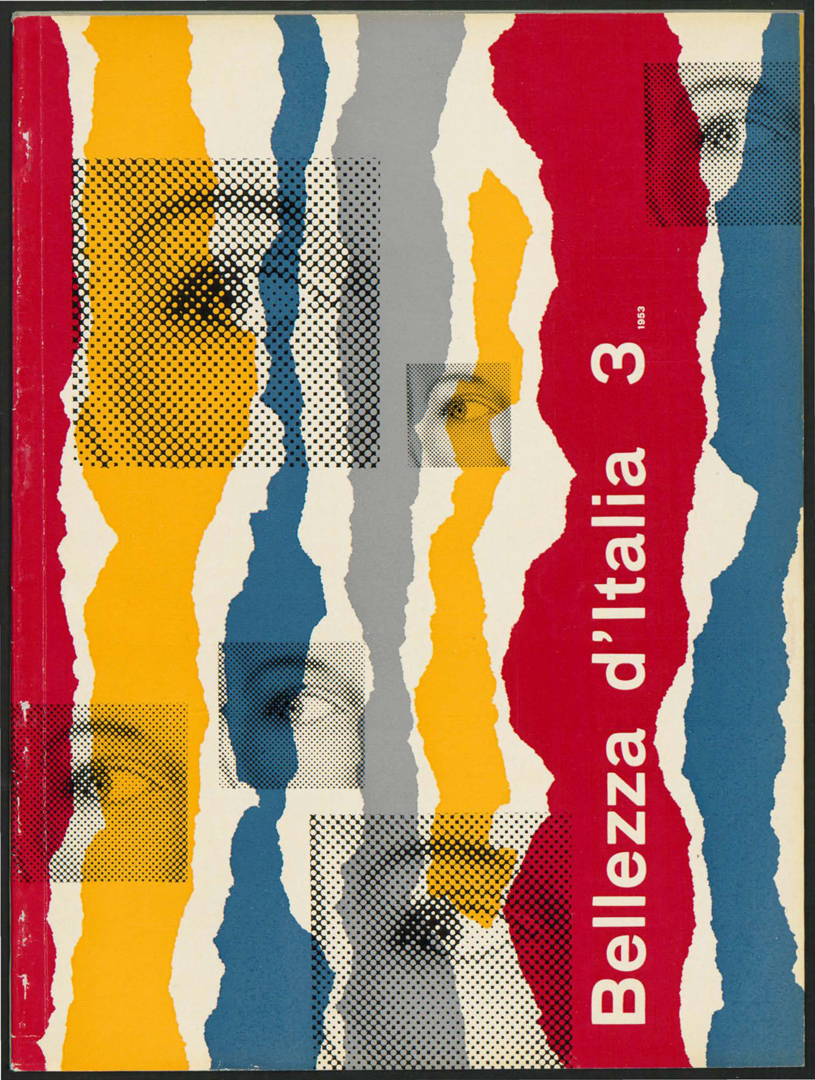
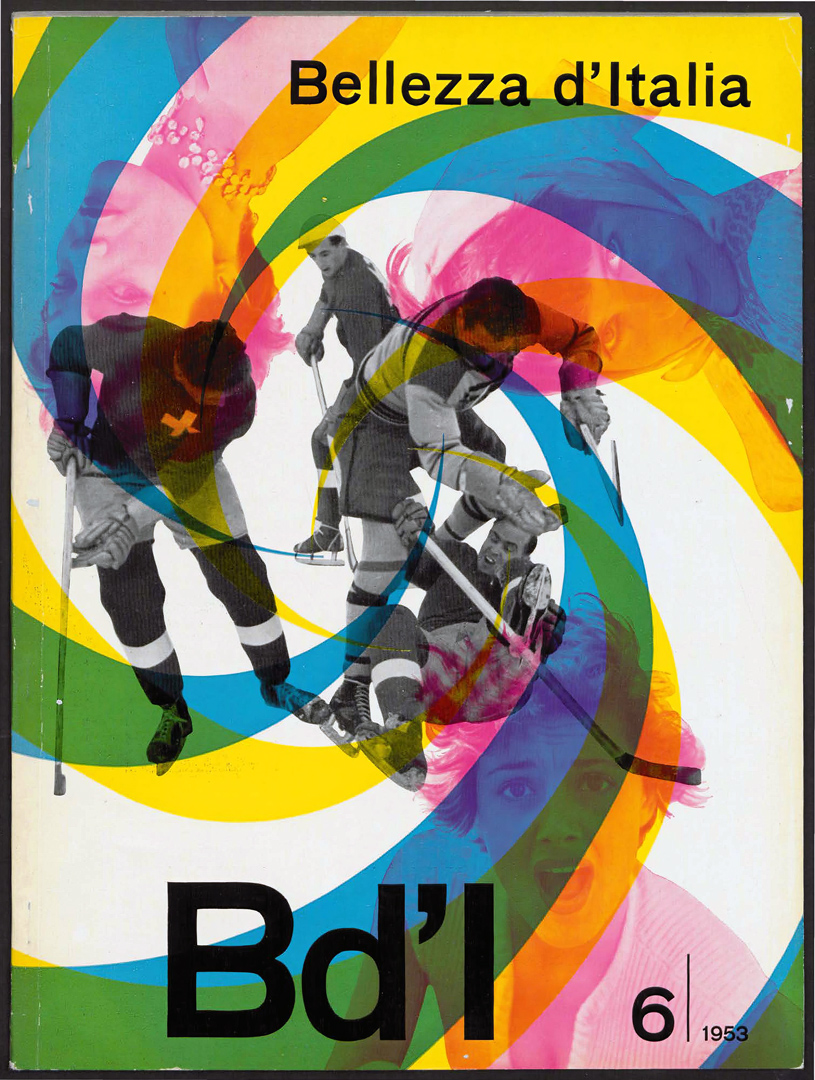
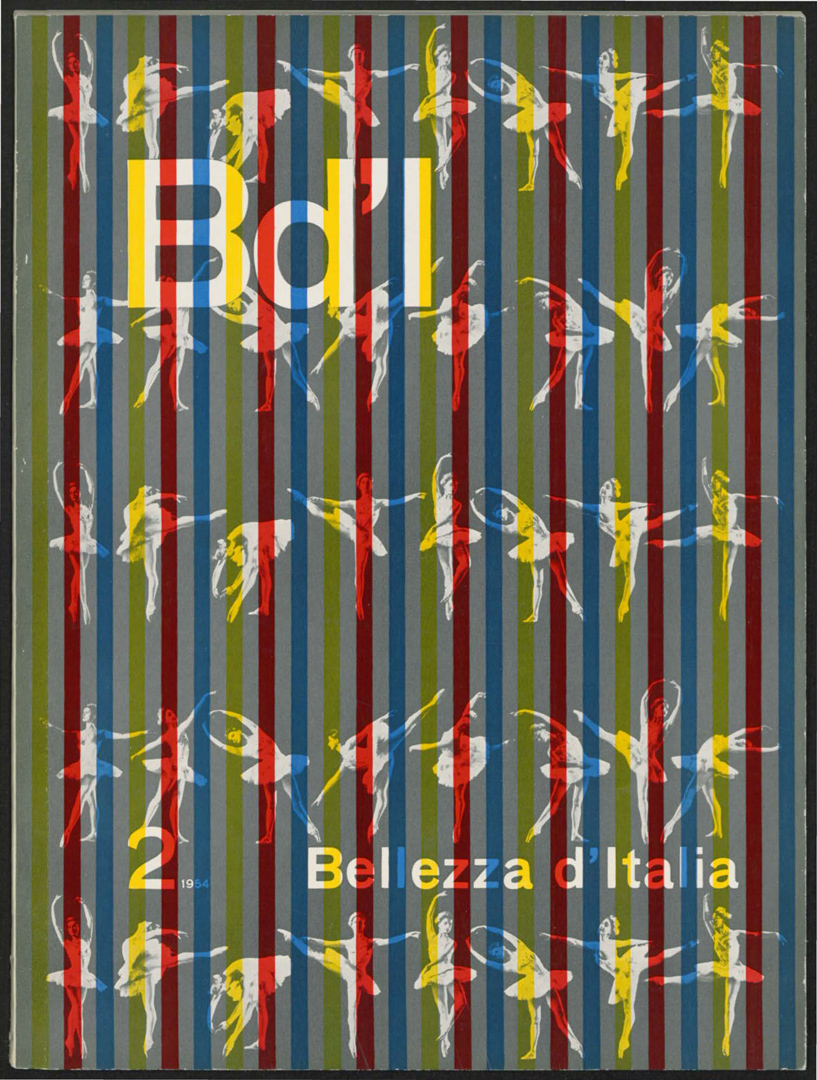
The magazine was also an object of propaganda at specialized conferences, such as the ‘International Medical Days‘ (‘Giornate mediche internazionali’) in Verona:
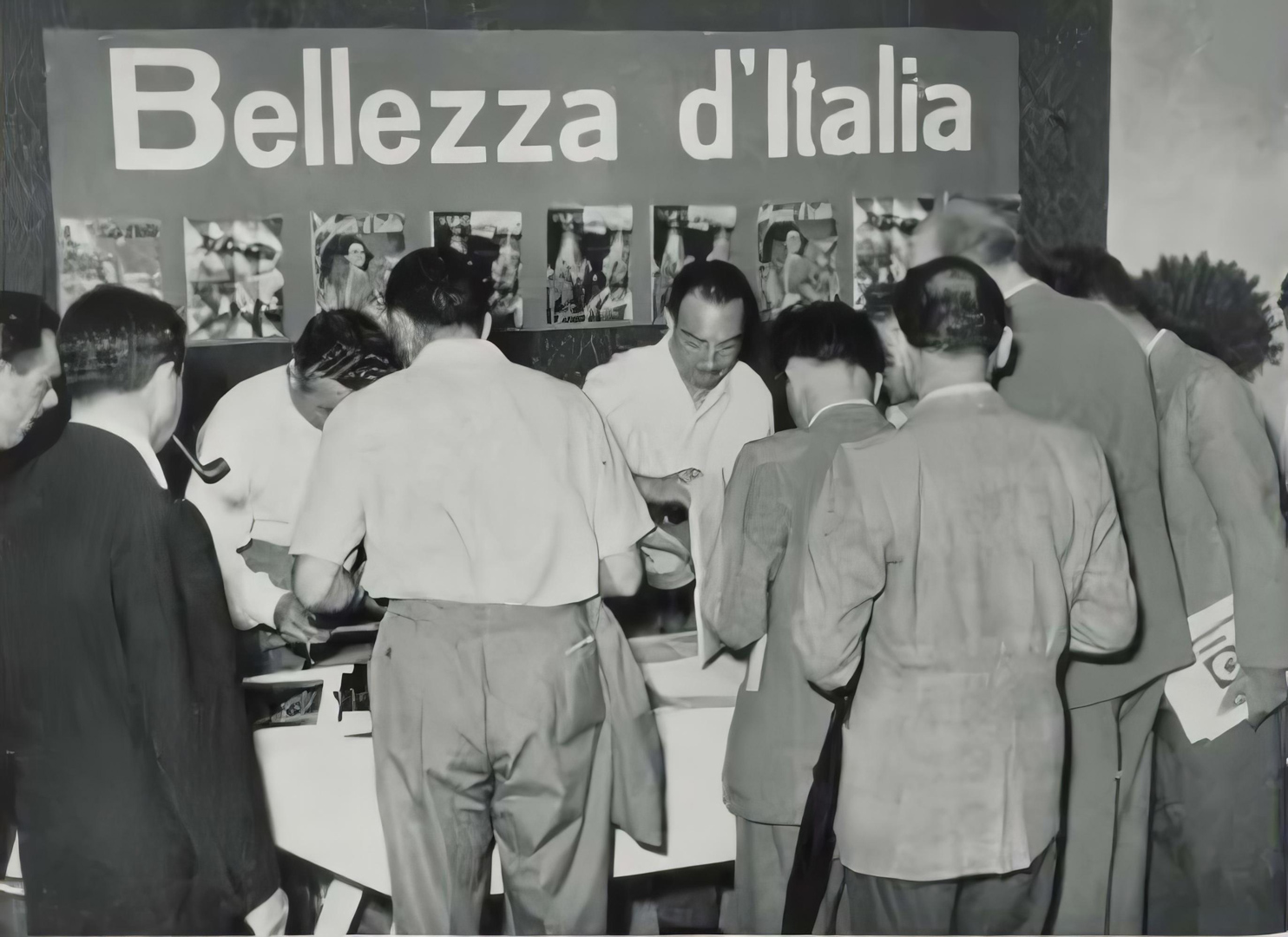
Franco Grignani took charge of the layout of the house organ from the very first issues, but starting from no. 3 of 1949, he began creating more elaborate covers, showcasing his proficiency in controlling graphic and photographic techniques. The abbreviation ‘Bd’I‘ first appeared on the cover in issue no. 5, 1952. Grignani developed a rich repertoire of graphic solutions for numerous advertising pages featuring Dompé products such as Artrosil, Cardioritmon, Guaiacalcium, Tribenzoica, and Vi–Lactis.
In the layout, everything was subordinated to photographic images, featuring various cuts skillfully arranged by Grignani on the surface of the double-page. To give greater prominence to photography and fully exploit its potential, an important innovation was introduced in 1955 with the album format (24.2 x 32.3 cm, “the only magazine in the world with horizontal layout“), also to distinguish the house organ from increasing imitations:
In 1954, Franco Grignani won the Award for the colour advertising page for Bellezza d’Italia. This marked his first participation in the National Advertising Award (‘Premio Nazionale della Pubblicità’), which was part of the fourth National Congress of Advertising in Venice [from ‘Rassegna Grafica’ issue n° 27, 1954, and ‘Schweizer Graphische Mitteilungen’ issue n ° 10, 1955]:
In 1958, in a sort of provisional balance, the management proudly stated that …
“in its eleven years of life, our magazine has been able to achieve such a high literary, photographic and technical level that it can be rightly considered among the first publications of international value.”
Idea, a magazine focused on graphic design and typography, published quarterly in Tokyo from 1953 until now, dedicated a specific 8-page article in issue n° 14 in 1995 (“The Dompé and Franco Grignani”), and the German magazine Gebrauchsgraphik in issue n° 3 in 1956 (6-page article) stated that the advertising for Bellezza d’Italia “exemplifies a new graphical expression and a particular striving after form and movement”.
As it happened with Alfieri & Lacroix since 1952, Dompé farmaceutici formed into a sort of illuminated client, open to experimentation with new inventive possibilities with a freedom seldom found in other advertisement campaigns. The relationship with the Dompé family was therefore characterized by such highest mutual esteem that, on a Sunday morning, Franco Dompé called Franco Grignani to invite him to look out of the window and the Grignani family saw a brand-new Fiat 500 ‘Topolino’ parked as a gift in the deserted street below their house. This became their first family car …
In his work for Dompé, Grignani applied his whole aesthetic and conceptual toolkit: movement, lateral vision, experimental photography, reiteration, and synthesis. Through photographic experimentation in the ads, he began constructing his distinctive visual language, frequently employing photomontage in the text-image relationship. The persistent reuse of photographs from his personal archive and the creation of multiple versions for the same advertising page highlighted Grignani’s characteristic theme of repetition, making the message effective by strengthening the overall image.
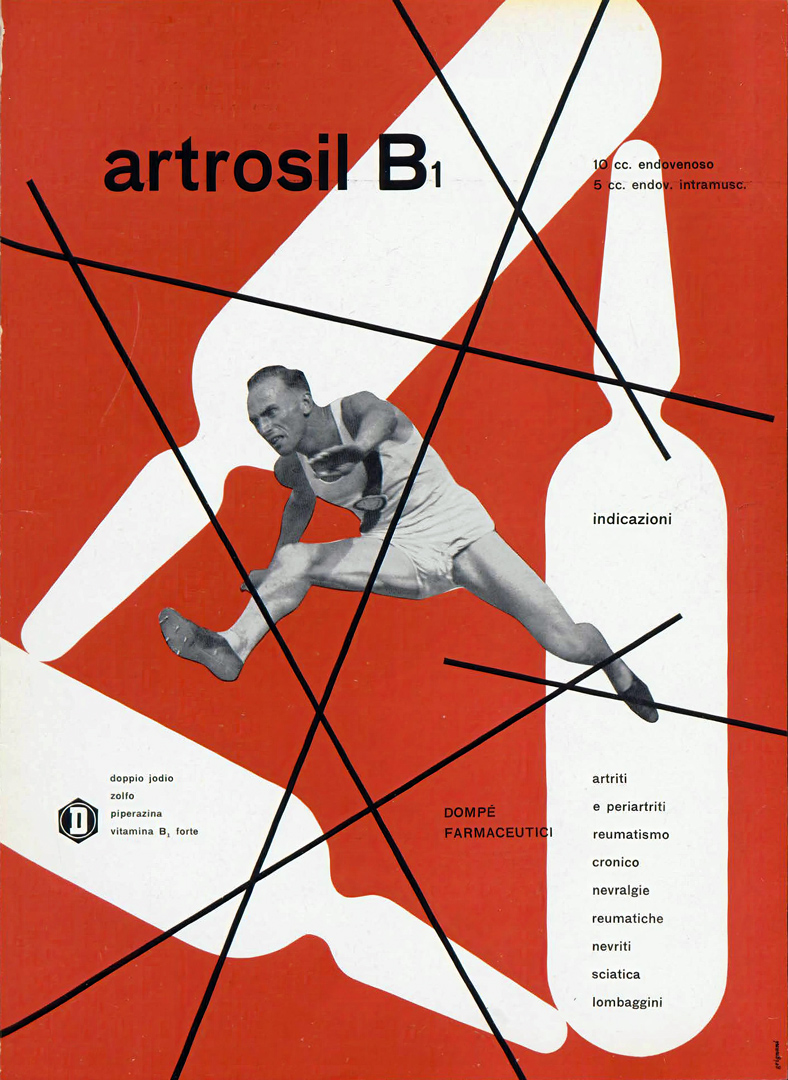
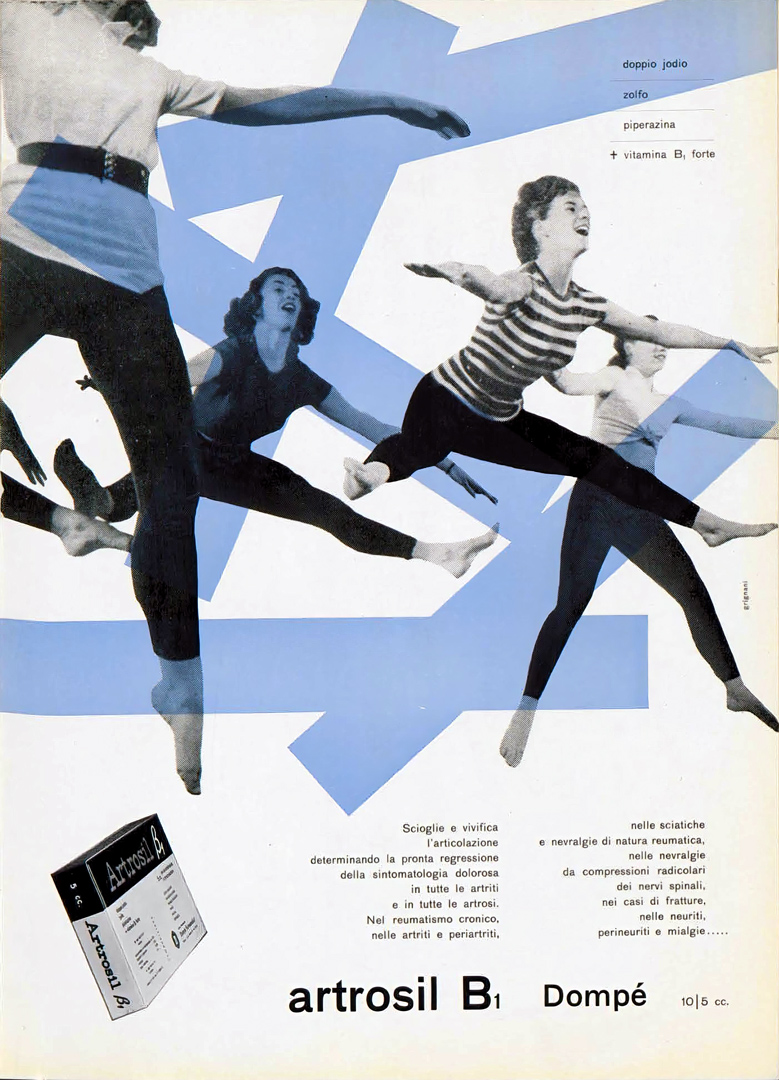

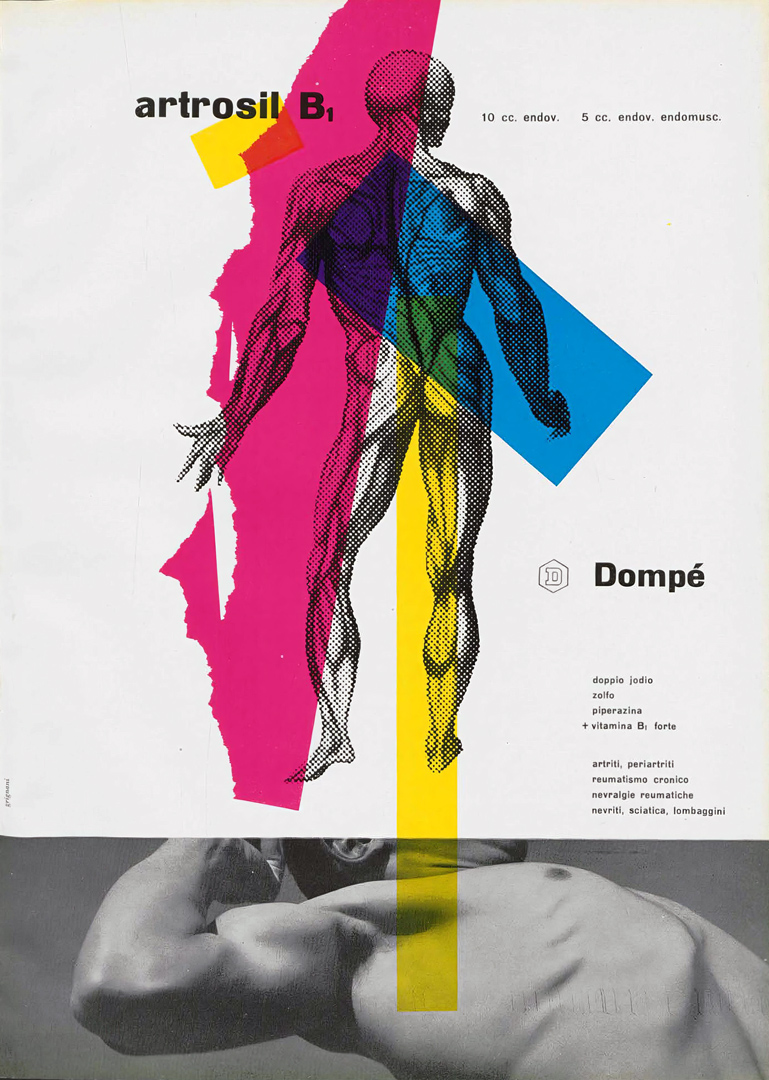
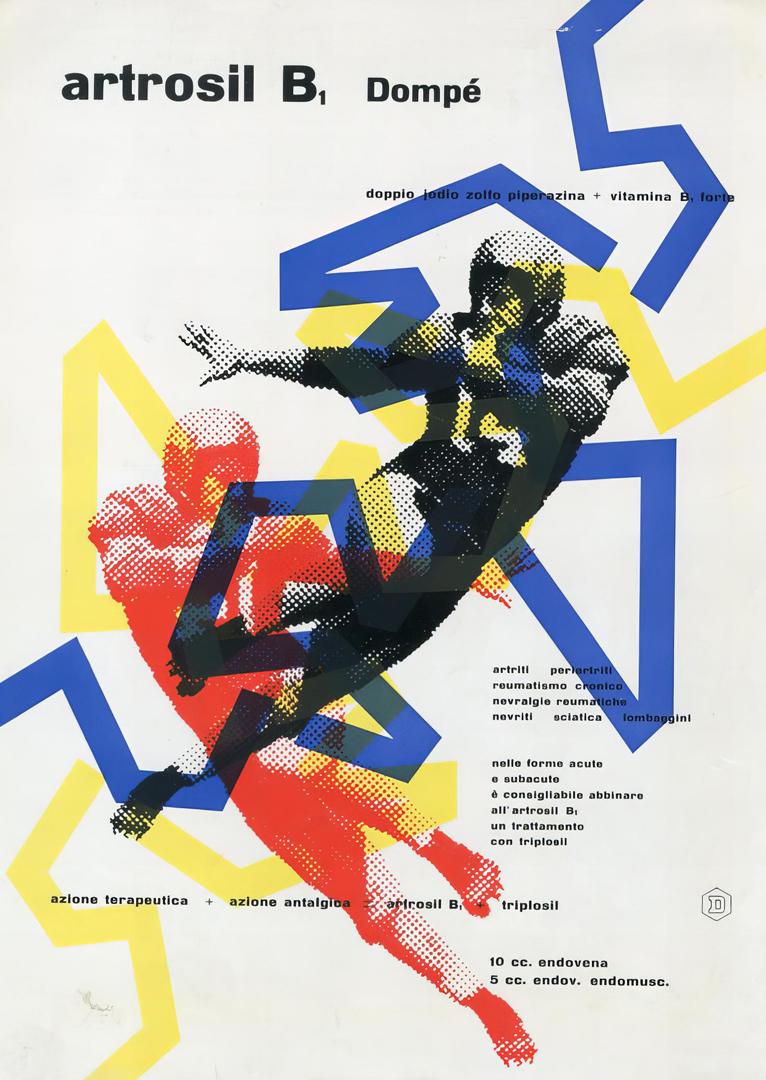
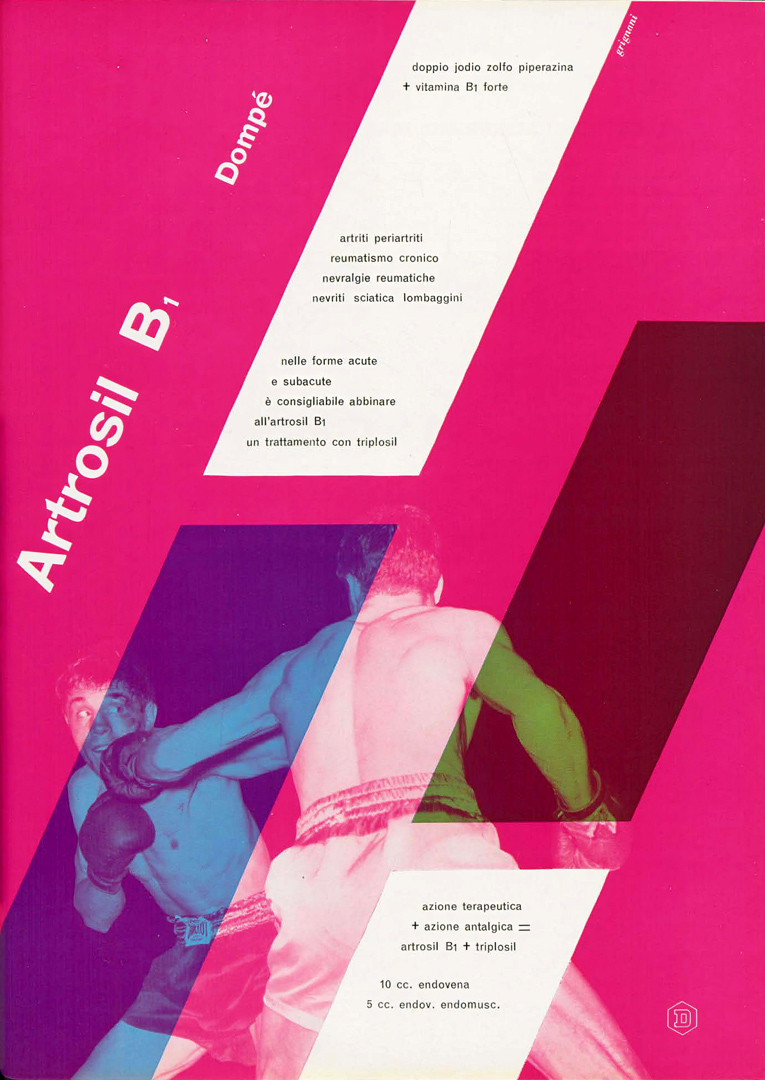
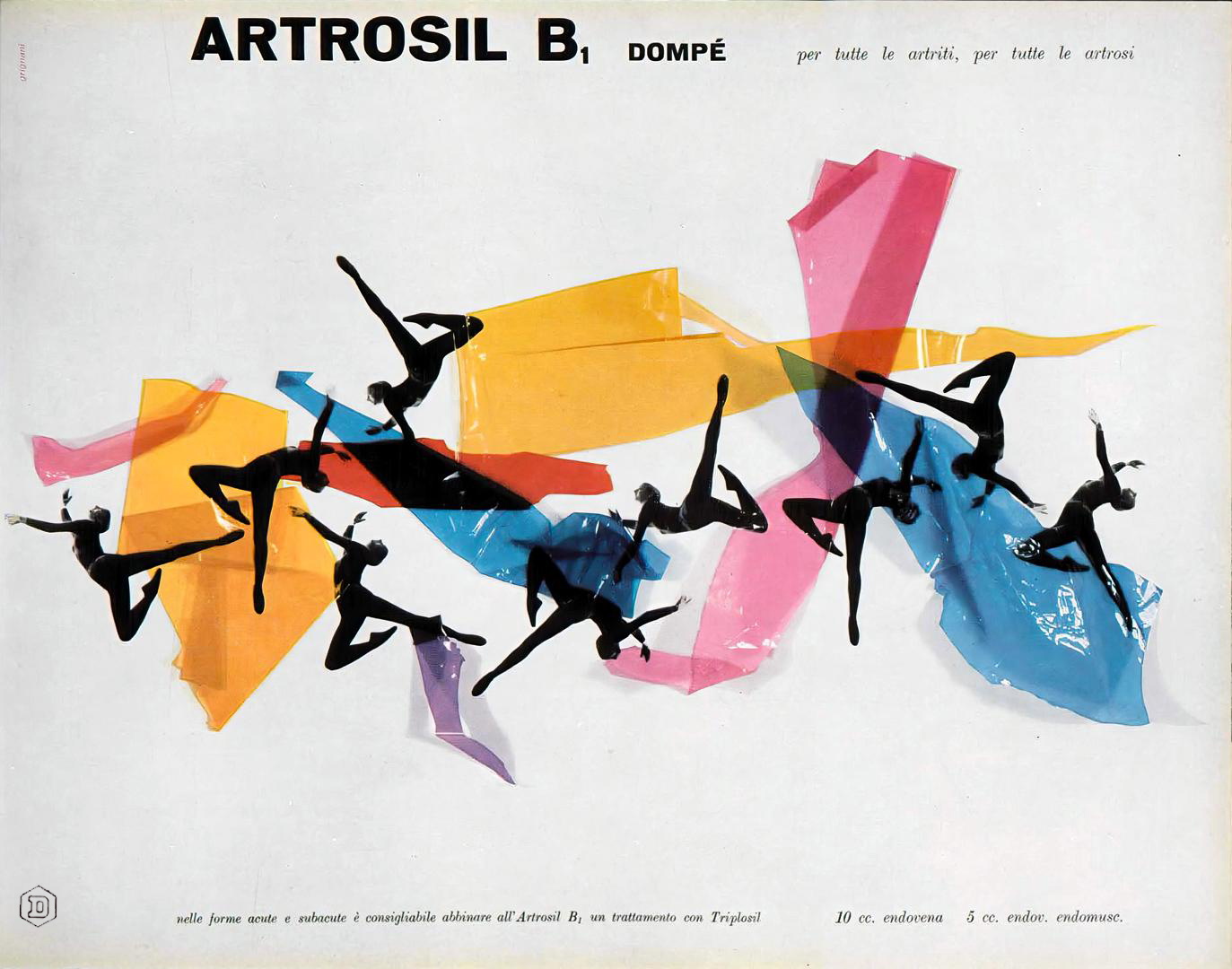
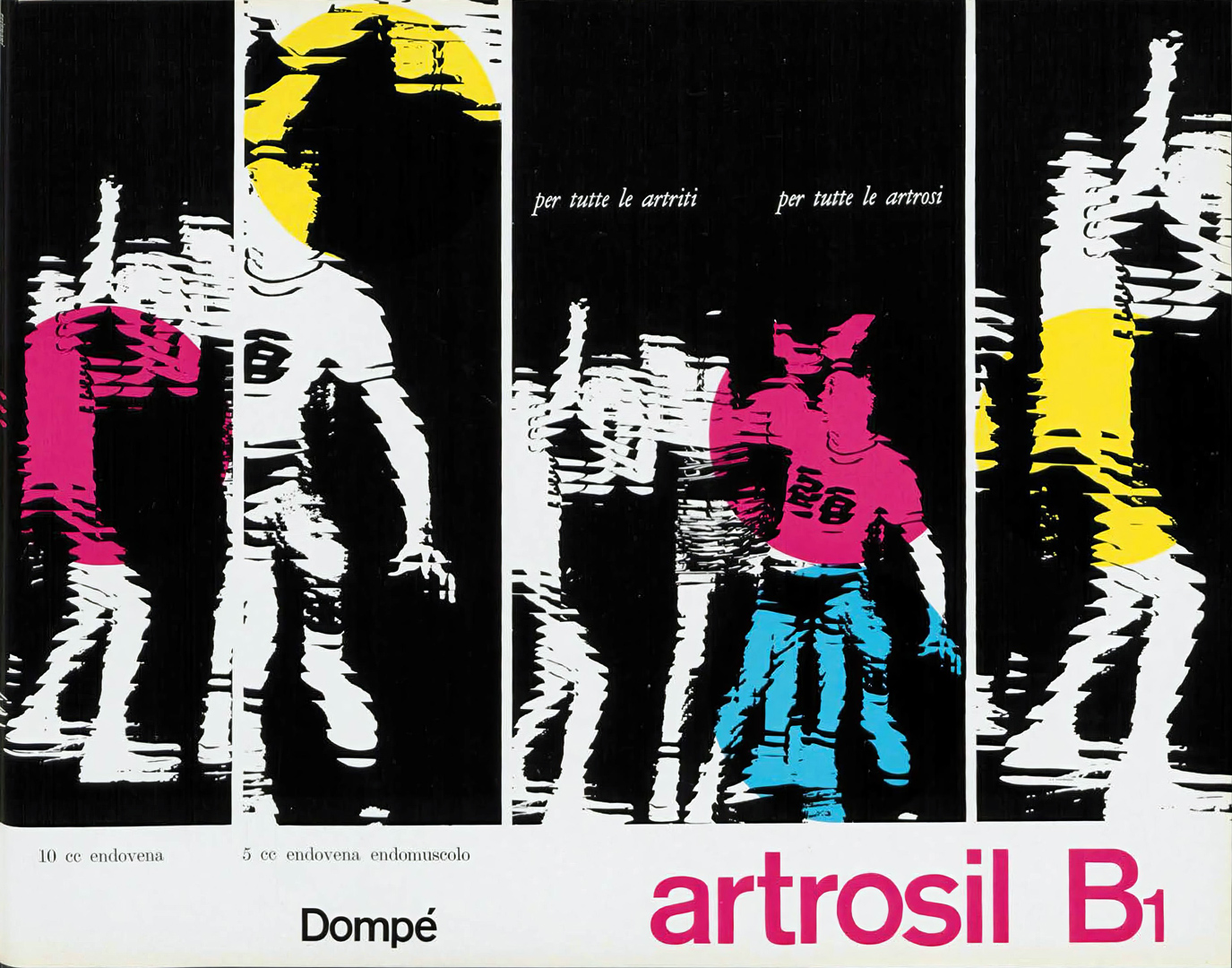
“This series contains advertisements for “Artrosil B”, an arthritis medication, but instead of highlighting the pain and suffering of this condition, Grignani put his experiments in motion and movement photography to work as a way to display what the reader’s life could look like without arthritis. It’s as if he’s showing a reader their future.”
[Sitka Mazzan, student from North Carolina State University, 2022]
Some of Dompé’s advertisements were showcased in 2011 at the Herb Lubalin Study Center in New York for “Pharma“, an exhibition focusing on the evolution of pharmaceutical design in the mid-20th century.
Most issues of Bellezza d’Italia (over 70 publications) can be now browsed from the website of the Dompé Foundation.
more ads for Dompé in the Gallery…
[special acknowledgement to Matt Lamont, UK designer and collector of print, and to Madoka Nishi, editor in chief of Tokyo’s Idea, for helping me examine issue n° 14 of Idea, 1955]
[*] courtesy of Daniela Grignani
[a] from ‘Rassegna Grafica’ issue n° 27, 1954
[1] graphéine
[7] AIAP / CDPG Centro di Documentazione sul Progetto Grafico, courtesy of Lorenzo Grazzani
[12] Typeroom, courtesy of Loukas Karnis
[14] Artribune & Galleria Gruppo Credito Valtellinese
[15] Graphiste-webdesigner, courtesy of Jean-Guy Cheminade
[some infos from Comunicare l’impresa by Carlo Vinti]
[I] EN translation:
Dompé Pharmaceutical Company and Franco Grignani
Franco Grignani was born in Italy in 1908. His design work has been strongly developed in Milan, a major centre for Italian business and industry. Therefore, the companies he art-directed were mainly large Milanese companies, including Montecatini, a major company related to chemistry and mining, Chlorodont, a cosmetics manufacturing company, Marzotto, a detergent company, and Innocenti, a manufacturer of motor scooters. His unique design traits have made him the key character in Dompé Pharmaceutical Company’s promotional activities.
Last Updated on 16/02/2025 by Emiliano
